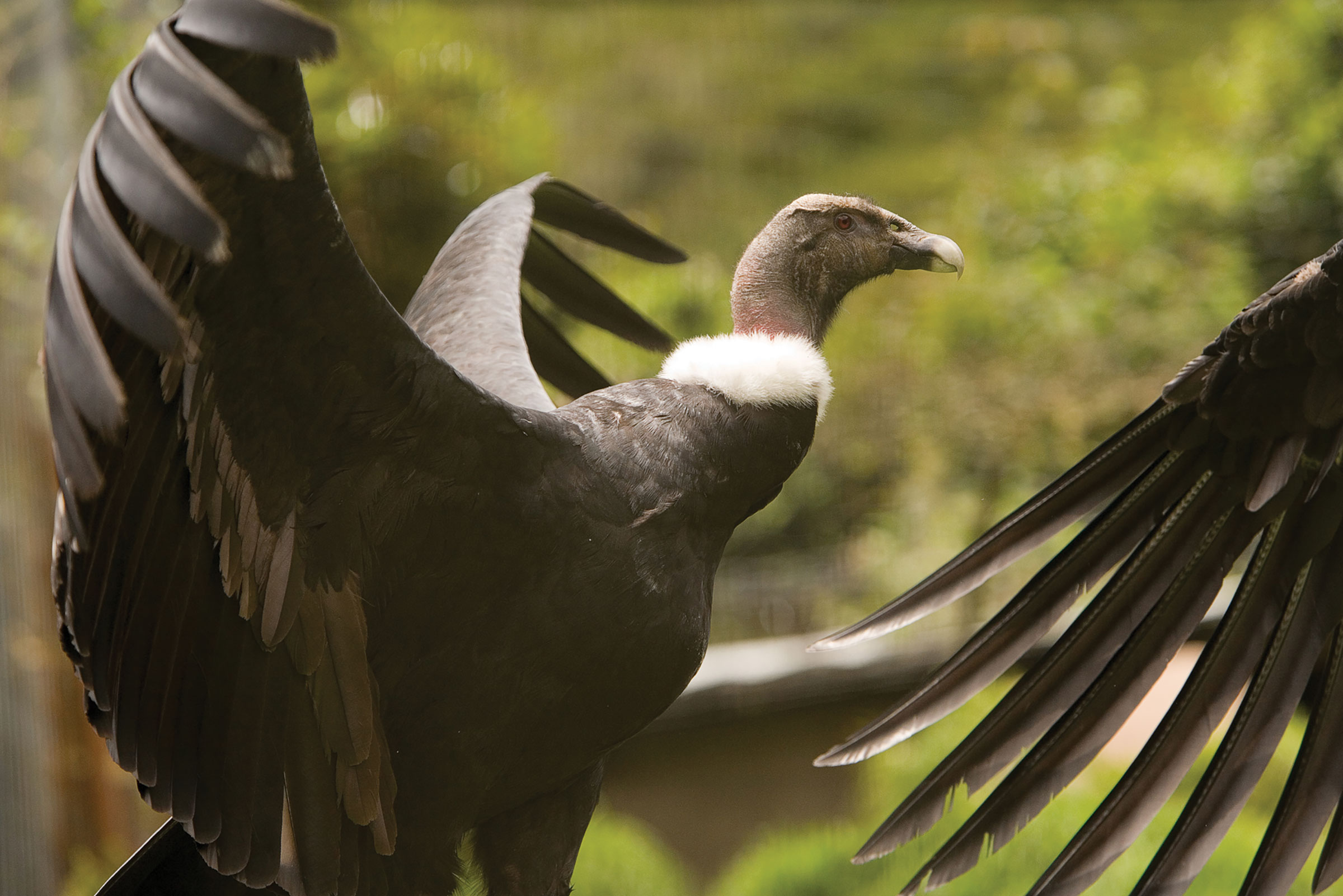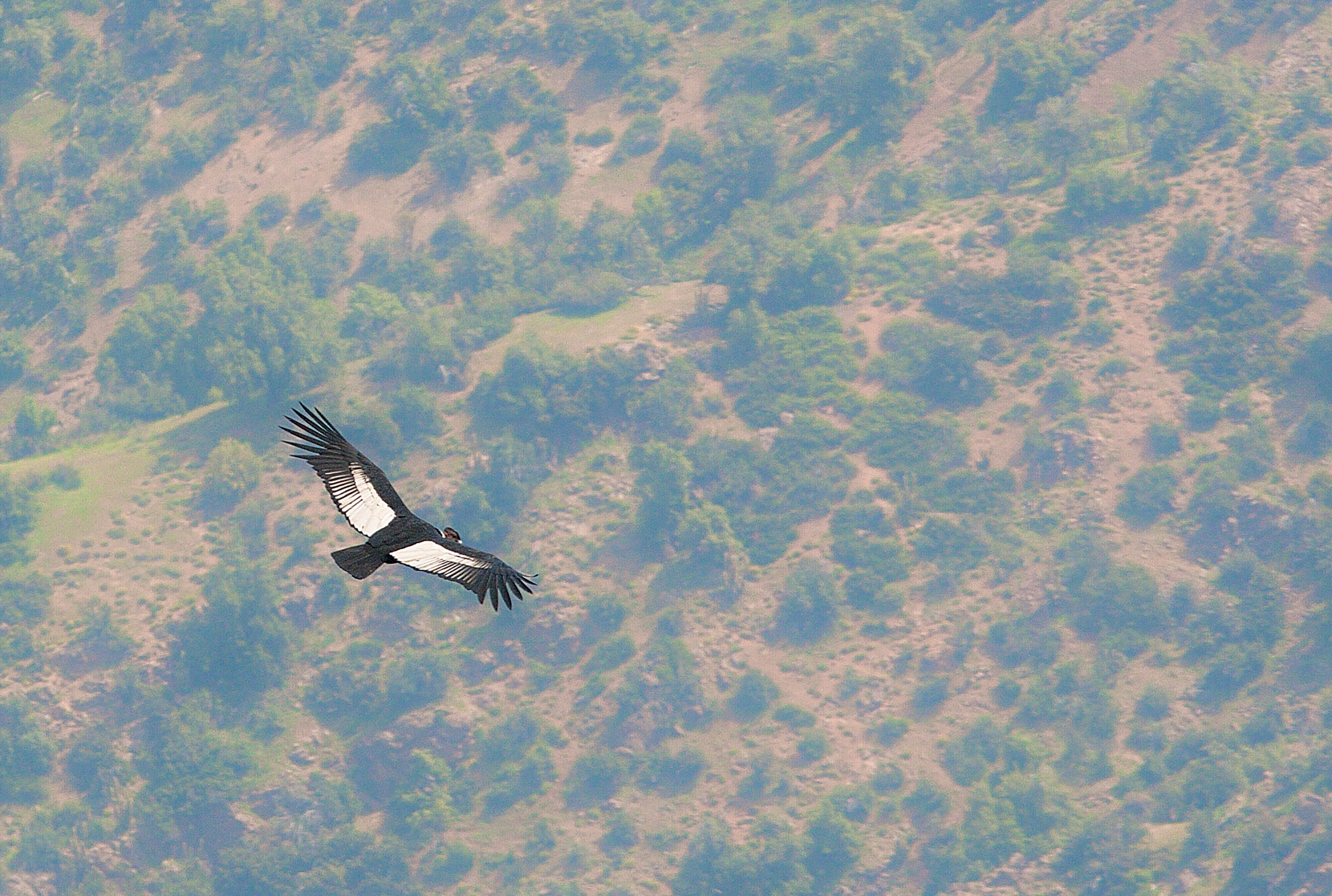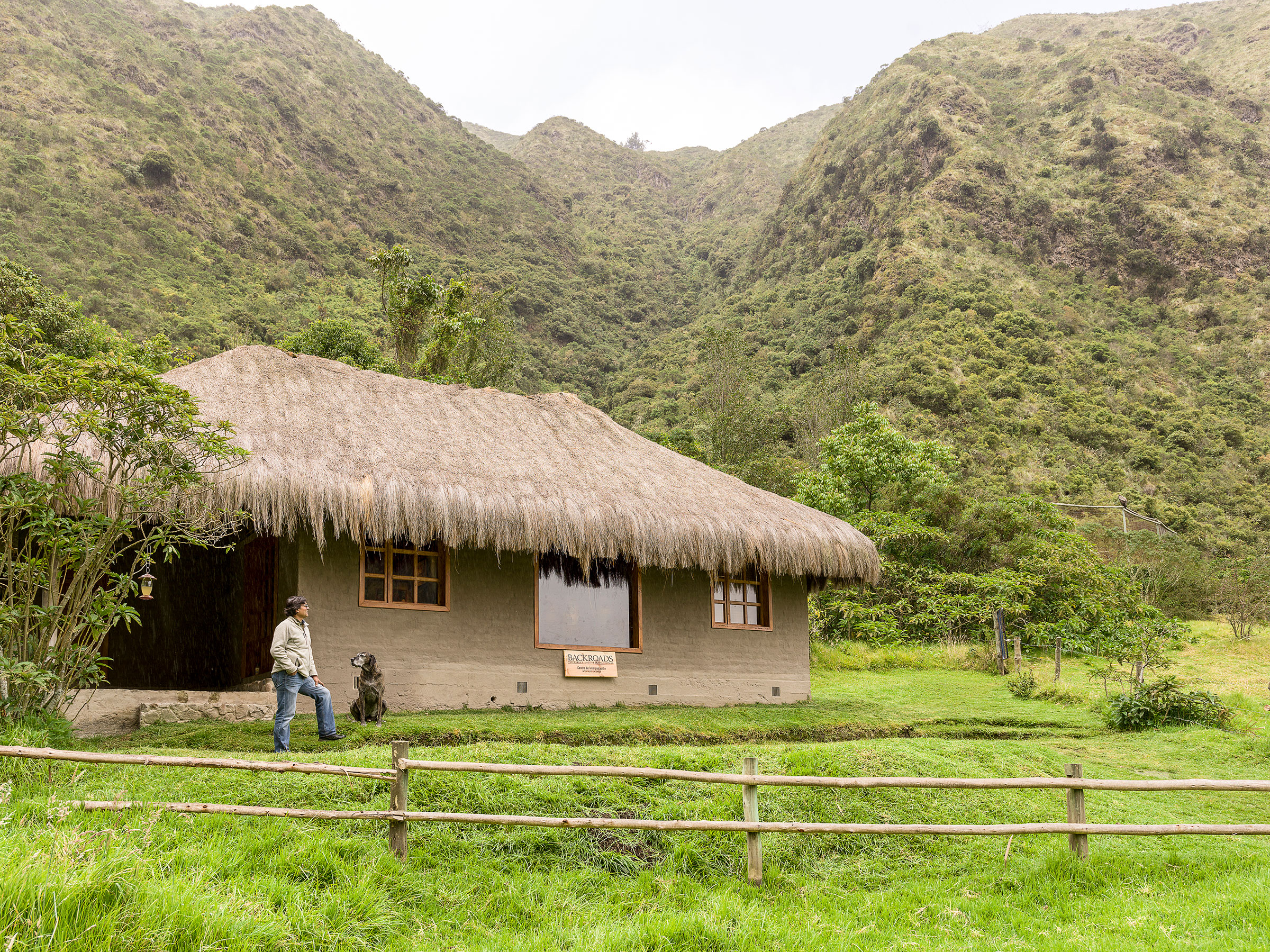Hacienda Zuleta's Andean Condor Huasi Project
Hacienda Zuleta's Andean Condor Huasi Project is internationally known for their work in rehabilitating the Andean condors. We caught up with Fernando, the owner of Hacienda Zuleta, to learn more about the Andean Condor and how all of us can be a part of the Andean Condor Huasi Project.
Please note: This interview first appeared on Ker & Downey's website on March 21, 2016. It has been updated to reflect the most recent news from the Condor Huasi Project.
Hacienda Zuleta is one of Ker & Downey’s favorite properties in the world. An authentic 4,000-acre working farm, this homestead is a destination in itself, frequently lauded for its pastoral charms, colonial atmosphere, and beautiful Andean setting in Ecuador.
But what many don’t realize is that Hacienda Zuleta is also one of only places in South America where guests are virtually guaranteed an interaction with the endangered Andean Condor. As anyone who has visited this unique corner of the planet can say, there is no more magnificent view than witnessing these majestic creatures soar below you from the top of the mountain peaks.

Through its esteemed Galo Plaza Lasso Foundation, Hacienda Zuleta is internationally regarded as one of the leaders in Condor conservation and has spent the past 20 years attempting to produce Condor chicks in captivity and release them into the wild. This is no easy feat, as Condors are known to mate for life, do not reach reproductive status until seven or eight years old, and only produce one egg every one to three years.
Now, after several years of strides and setbacks, Zuleta is thrilled to announce that a male chick has hatched and thrived and is scheduled to be released to the wild sometime this summer. Named “Churi”, meaning “Son”, this single Condor is truly the “Son of Zuleta” and the realization of a 20-year old dream. But there is still a lot of work to be done.
Ker & Downey sat down with Fernando, the owner of Hacienda Zuleta, to learn more about the Andean Condor and how all of us can be a part of Churi’s survival and the revitalization of the Andean Condor in Ecuador.
When did the Galo Plaza Lasso Foundation of Hacienda Zuleta first become involved in the conservation of Ecuador’s Andean Condors?
Well, the foundation was officially established in 1995 and it is then that we started to really focus on the Andean Condor. But the foundation was actually established in 1995 as a way to continue the legacy and life work of my Grandfather, Ecuadorian Ex-President Galo Plaza Lasso. He was a great visionary for Ecuador and for the world; serving as Minister of Defense, Ecuadorian Ambassador to the United States, President of Ecuador during 1948-52 and finally after many international diplomatic posts he served as Secretary General of the Organization of American States. So you could say that this work was started by him long before 1995.
What makes these birds so special?
The Andean Condor is the world’s largest flying bird, with a wingspan of up to 10 ½ feet! During flight they can travel over 100 miles at a time and soar on air currents at altitudes over 15,000 feet. It is truly one of planet Earth’s most majestic birds to witness in the wild. In terms of its importance to the ecosystem, they eat very large carrion so they serve as a natural clean up mechanism. Apart from the scientific side, the Andean Condor is a symbol of Andean identity and pride – for all Pre-Colombian societies, the Andean Condor was a messenger between the heavens and the terrestrial worlds.
What has led to their decline in recent years?
A combination of habitat loss/change and a lack of public education about the Condors. The Condors feed off of large carrion (dead animals), which brings them down to ground level in populated areas. It is a long list of threats: they ingest lead bullet fragments from human hunted animals and also feed them to their chicks; humans shoot them as trophies or capture them as pets; some ranchers see them as a threat to their livestock and kill them or even poison dead animals with DDT which is then spread to the young; changes in food sources due to habitat loss; the list goes on.
By your estimate, how many are left in Ecuador?
Recent surveys in 2015 estimate the remaining population of Andean Condors in the wild to be more than 50 but less than 100 in Ecuador. Worldwide they are classified as a “near threatened”, but in Ecuador the Andean Condor is classified as “Critically Endangered”. The only classifications below “critically endangered” are “extinct in the wild” and then “extinct”.

Tell us about the work of the Galo Plaza Lasso Foundation and the strides it has made in the last 20+ years to prevent their extinction.
Broadly speaking, the foundation’s mission is to support, develop, and implement programs and activities, which improve the quality of life for the local communities through education, conservation, and socioeconomic development. So for the Condors, we can summarize the three components as they relate to the Condor Project as follows:
- Conservation: protecting wild lands, caring for and releasing Condors into the wild, and studying their movements and habitat.
- Education: We invite members of the local community schoolchildren to our Condor Interpretation Center at Hacienda Zuleta to educate them about the importance of the Condor, threats to its existence, dispel myths about its behavior, and instill a sense of pride in the community. Through previous tracking and monitoring programs of released Condors we are learning where nesting sites are and where the Condor is most vulnerable to threats, so we go into those communities together with other governmental and non-governmental agencies to carry out public education campaigns like we do at the Hacienda for our local communities.
- Socioeconomic Development: This is where our project is very different, as it is rooted in the local economy through tourism. We have visitors from all over the world who come to stay at Hacienda Zuleta, in large part to see Andean Condor, amongst other attractions. So the local people see the interest that foreigners have in the Condors and are rightfully quite proud of it. A portion of all tourism profits at Hacienda Zuleta goes back into the Galo Plaza Lasso Foundation... So in this sense our Condor project is unique as it is a true example of “Conservation through Tourism” and the local people get involved as they understand a happy and healthy community is intertwined with a healthy ecosystem and the existence of these amazing species.
What have you learned along the way?
They are very smart, innocent and curious creatures – working with them has shown how fragile they are as a species due to these characteristics, which make them so vulnerable. We have learned a ton not only about how to reproduce Condors in captivity and track their movements in order to map their nesting sites, but we have learned that the human side is integral to their survival. Education is key and we know that when people are educated about their traits and that they are not a threat, but rather something to be proud of, there is hope.]
What is your favorite aspect of working with them?
Apart from the captive condors at our center on the Hacienda, it is also prime nesting habitat and soaring area for the wild condors left. It’s hard to explain the intensity of this, but the more we work with the captive condors, more wild condors seem to be attracted to Hacienda Zuleta. Seeing, hearing and even feeling as they soar by on thermals is impossible to describe, it is inspiring and powerful. Daily we have wild condors that come down and perch on the top of the captive condors’ enclosures, it feels as if they understand the situation and are trying to be supportive and encouraging as possible. So the fact that we can do this scientific work but be reminded at the same time of the majesty of these birds in the wild is really motivating.

Tell us about Churi and his journey thus far. Why is he so important to the future of the Andean Condors?
Churi is unique in that he is the first condor chick to be born at our Hacienda and under our non-profit Foundation’s sole direction, which is supported mainly by tourism revenues and donations from guests. That is why we named him “Churi” which means “Son” in the local Quechua language – we see him as the son of all that are friends of Zuleta through tour operators and travel agents around the world who send people here and our guests. We are doing this for Churi together. We have been trying to achieve the successful hatching and release of a captive bred condor for almost 20 years and it is finally happening. We hope that by pulling this off, it will be a great example of how tourism and conservation can work hand in hand.
When do you plan to release him into the wild?
We are planning to do so in June or July of this year, if not sooner. A lot depends on the other Condors and how they take to Churi. Two other Condors are being brought from the Quito Zoo to be released with Churi, because we know from past experience that survivability rates for Condors released in pairs or groups are higher than those released solo. We also want to make sure that we have a solid plan in place for monitoring Churi after release and implementing a broader conservation and education component based on the data we will receive after his release – that is why we are raising funds to purchase the GPS tracking equipment now.
How can people be a part of that vision and Churi’s future?
Come visit us at Hacienda Zuleta to get involved with our work and meet the people of our community. And if you want to help now, donate to our Galo Plaza Lasso Foundation. At the moment we are raising funds towards the purchase of GPS tracking/monitoring to be used with Churi’s release... With the tracking equipment, we will be able to monitor and study Churi’s movements and safeguard him should he have issues during the adaptation period. [This information will also] be instrumental for other condors we hope to reproduce at the Hacienda in the coming years.

Ker & Downey is committed to aiding Hacienda Zuleta until the wild population of Andean Condors in Ecuador is thriving, and we now invite all of our friends and followers to do the same. Here’s how to get involved:
- Visit greenourplanet.org/condors, where you can learn more about Churi and donate to the crowdfunding campaign for Churi’s release GPS equipment. Without it, past 20 years of the Foundation’s work could be compromised overnight.
- Book your travel to Ecuador through Ker & Downey and see these beautiful creatures for yourself. Every Hacienda Zuleta reservation made through Ker & Downey generates a donation to the Gallo Plaza Foundation and their work with the Andean Condor. Our Ecuador: Amazon and Andes itinerary is the perfect starting point for inspiration!
An update from the Andean Condor Huasi Project:
Since sitting down with Fernando to discuss Hacienda Zuleta and the Andean Condor Huasi project, Churi was successfully released into the wild along with two other condors that were born and raised in the Quito Zoo.
In 2019, Ayu and Inti, Churi’s parents, had another egg. They took care of it and raised the chick successfully. The nine-month-old chick, a male, is named Illapa, for the god of rain and thunder in Andean mythology. Soon Illapa will leave his parents.
The other breeding pair Coya and Tarishka finally mated for the first time last year after seven years together. They had an egg, but unfortunately, it was not fertile. Everyone is hopeful they will have more success this year.
Unfortunately, condors in the wild are still being shot or poisoned regularly, which is why the Andean Condor Huasi Project works so hard to educate and bring awareness to the importance of the Condor and the threat to their existence.
For more information and the Andean Condor Huasi Project, contact your Luxury Travel Consultant. To stay up to date on all of our online content, follow us on Facebook and Twitter.
